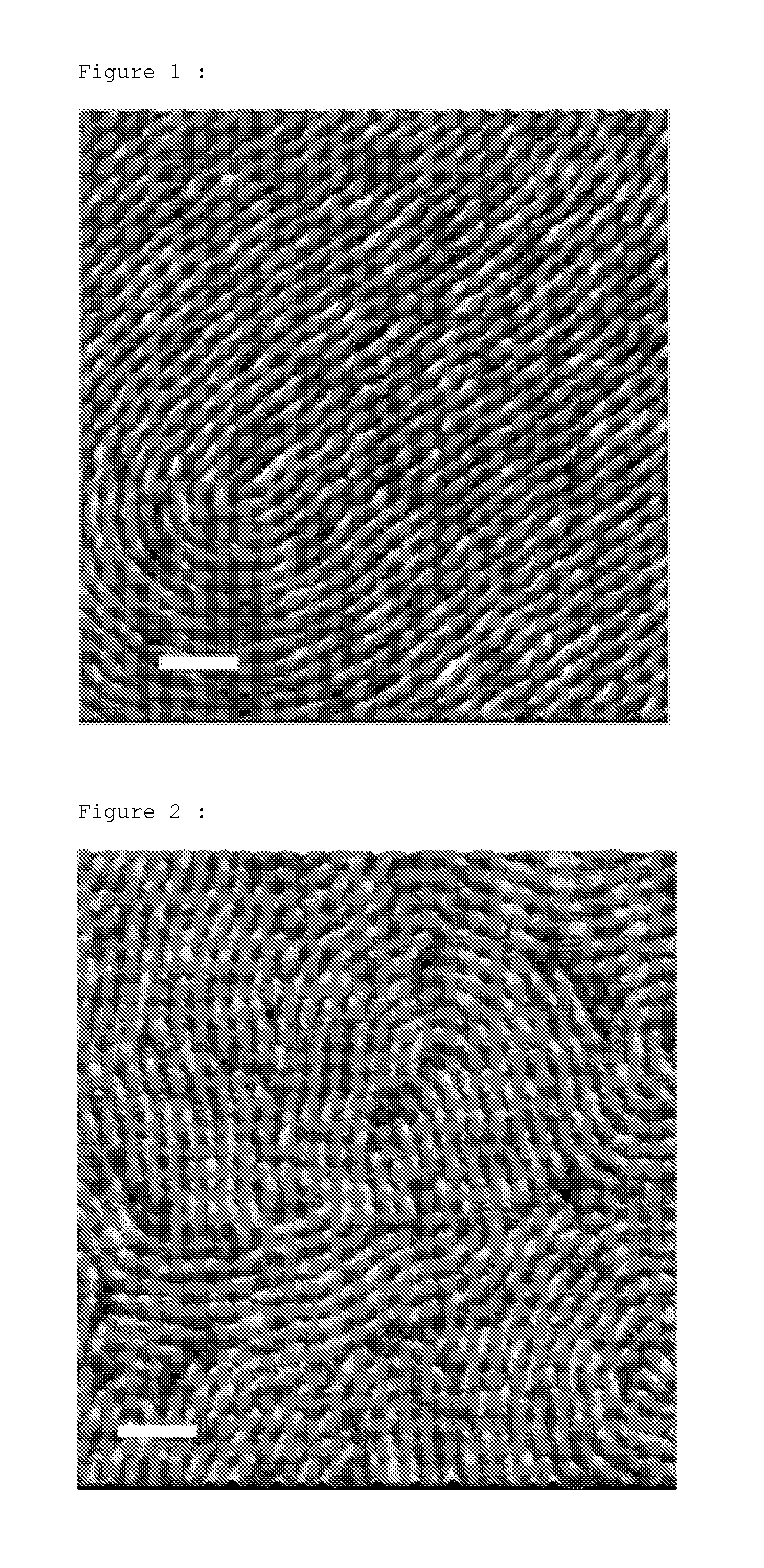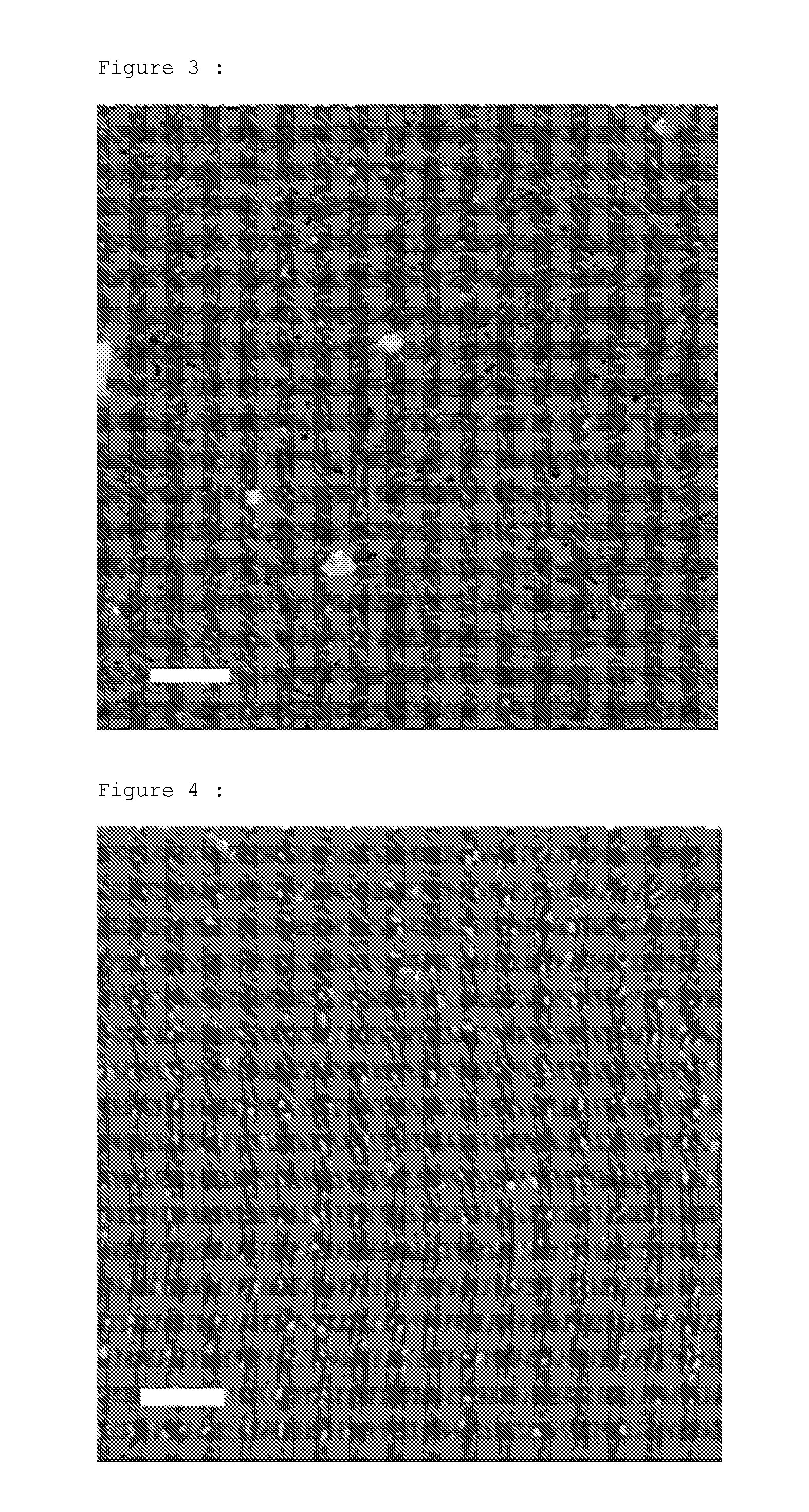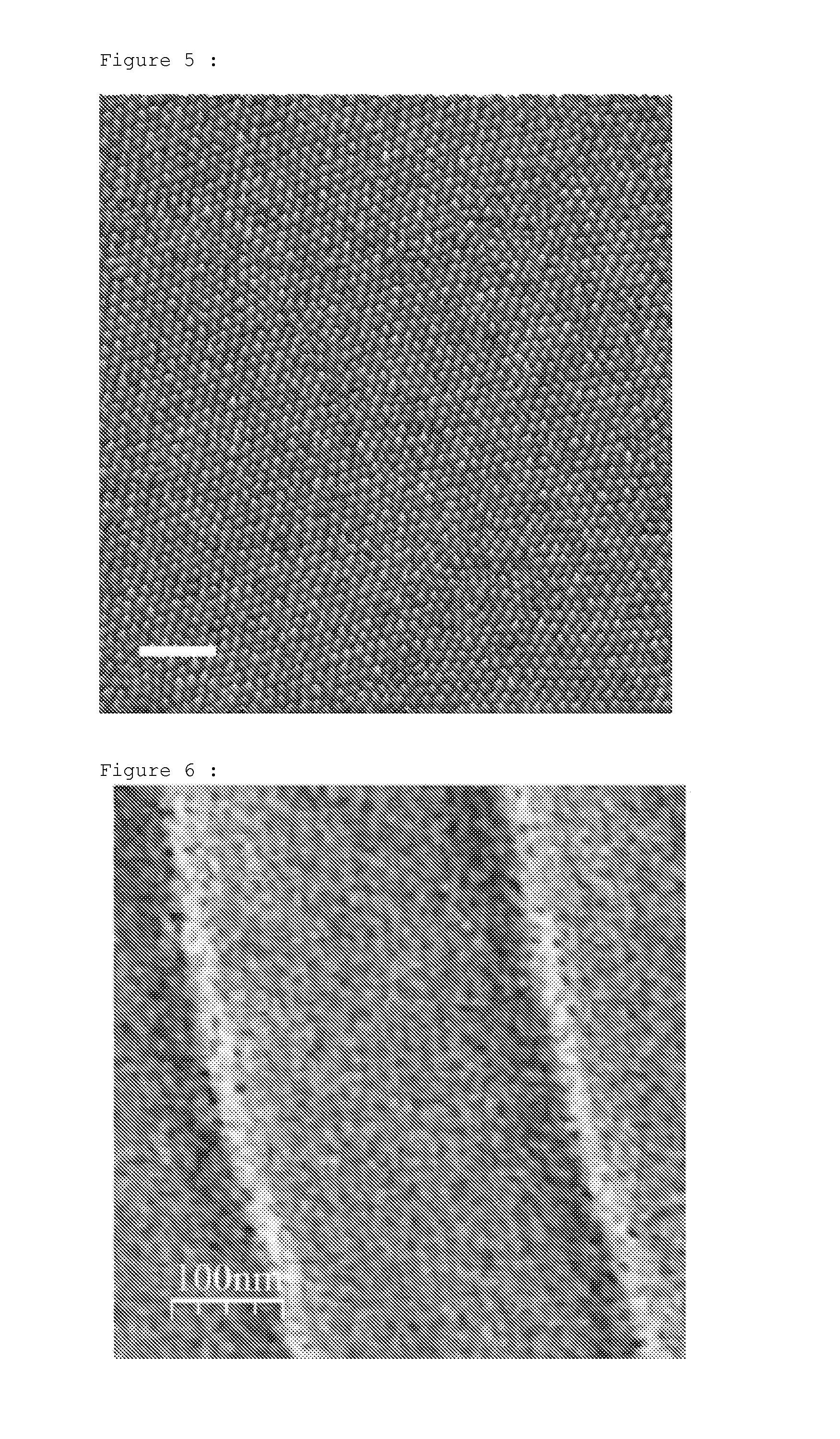Process that enables the creation of nanometric structures by self-assembly of block copolymers
a technology of block copolymer and self-assembly, which is applied in the direction of instruments, photomechanical devices, coatings, etc., can solve the problems of limiting the advantage of block copolymers based on ps and pmma for the production of structures, not being able to go much lower in terms of domain size, and not being able to meet the constant needs of miniaturization. the effect of etching contras
- Summary
- Abstract
- Description
- Claims
- Application Information
AI Technical Summary
Benefits of technology
Problems solved by technology
Method used
Image
Examples
example 1
[0055]Synthesis of poly(1,1-dimethylsilacyclobutane)-block-PMMA (PDMSB-b-PMMA).
[0056]1,1-Dimethylsilacyclobutane (DMSB) is a monomer of formula (I) where X═Si(CH3)2, Y═Z=T=CH2.
[0057]The polymerization is carried out anionically in a 50 / 50 (vol / vol) THF / heptane mixture at −50° C. by sequential addition of the two monomers with the secondary butyl lithium (sec-BuLi) initiator.
[0058]Typically, lithium chloride (85 mg), 20 ml of THF and 20 ml of heptane are introduced into a 250 ml flame-dried round-bottomed flask equipped with a magnetic stirrer. The solution is cooled to −50° C. Next, 0.00015 mol of sec-BuLi is introduced, followed by an addition of 0.01 mol of 1,1-dimethylsilacyclobutane. The reaction mixture is stirred for 1 h and then 0.2 ml of 1,1-diphenylethylene is added. 30 minutes later, 0.01 mol of methyl methacrylate is added and the reaction mixture is kept stirring for 1 h. The reaction is completed by an addition of degassed methanol at −50° C. Next, the reaction medium i...
examples 2-6
[0059]These copolymers are prepared according to the protocol of example 1, while varying the amounts of the reactants. Comparative example 6 is prepared using 1-butyl-1-methyl silacyclobutane (BMSB).
[0060]The molecular masses and the dispersities, corresponding to the ratio of weight-average molecular mass (Mw) to number-average molecular mass (Mn), are obtained by SEC (size exclusion chromatography), using two Agilent 3 μm ResiPore columns in series, in a THF medium stabilized with BHT, at a flow rate of 1 ml / min, at 40° C., with samples at a concentration of 1 g / l, with prior calibration with graded samples of polystyrene using an Easical PS-2 prepared pack. The results are given in table 1:
TABLE 1Mn SECsec BuLimole DMSBPolysiletane / PMMA compositionDispersitySelf-assemblytempExample(g / mol))(mole)or BMSBmole MMA(wt %)Mw / Mn(K)1 (invention)108500.000150.010.0143 / 571.154532 (invention)165000.000010.010.004374 / 261.104533 (invention)51000.000350.010.004377 / 231.053734 (invention)53000.0...
PUM
| Property | Measurement | Unit |
|---|---|---|
| temperature | aaaaa | aaaaa |
| temperature | aaaaa | aaaaa |
| thickness | aaaaa | aaaaa |
Abstract
Description
Claims
Application Information
 Login to View More
Login to View More - R&D
- Intellectual Property
- Life Sciences
- Materials
- Tech Scout
- Unparalleled Data Quality
- Higher Quality Content
- 60% Fewer Hallucinations
Browse by: Latest US Patents, China's latest patents, Technical Efficacy Thesaurus, Application Domain, Technology Topic, Popular Technical Reports.
© 2025 PatSnap. All rights reserved.Legal|Privacy policy|Modern Slavery Act Transparency Statement|Sitemap|About US| Contact US: help@patsnap.com



